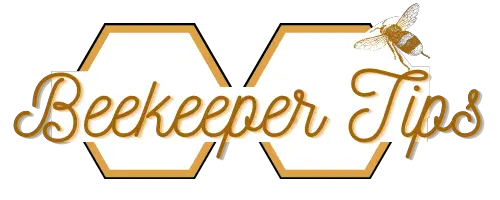In this article, we take a look at how to install wax foundation in frames. This can be really simple to quite complex depending on the type of frame you are using. We will evaluate the options and show how they work.
Table of Contents
What is Beeswax Foundation?
Beeswax foundation is an embossed wax or composite wax sheet. It has hexagons imprinted and works to center the bees on the frame. We use the beeswax foundation to encourage/force the bees to build comb in the places we want it. The foundation can also increase the strength of combs allowing us to move beehives in vehicles and to spin the honey out of combs.
Find more information How To Transport Bees Long Distance?
How To Install Wax Foundation In Frames
There are a number of ways to install wax foundation in frames depending on the type of frame and the type of foundation. We will start from the simplest and move up to more complex methods.
Wax Strip
In this method, we install a thin strip of wax at the top of a frame. This works well for traditional wooden frames. With this method, we are trying to minimize the amount of wax we put in a frame so that the bees can do what they want to do. Bees know what cells they want, and where they want to put them.
In certain bee management strategies, we have found beekeepers trying to force an entire beehive to work on worker comb cells of a specific size. With this method, bees are given no space in which to rear drone cells and no choice about the size of their cells. The logic that beekeepers had is that they know better, bigger bees are more powerful, can carry bigger loads of nectar, and drones use energy.
Letting Bees Do Their Thing
What we now know is that drones are essential for the evolution of local adaptation and resistance to diseases. The more drones a hive produces, the more choices a queen in an area has. If there are not many drones around, she mates with whoever she can. If there are lots, she chooses the best. When you want your bees to be better, you need a well-populated drone congregations area. If you cannot do this, buy queens in.
My personal bias is towards a wax strip – I like to let my bees do their own thing. They have been bees since my ancestors had more fur and climbed trees – they know a lot more about being bees than I do. I just help them along when they make a mistake or get sick because we as humans made a mistake.
Installing A Wax Strip
Take a hobby knife and a cutting board, and a metal ruler. Cut the wax into strips that are about an inch wide.
Insert the wax strip in the groove in the wooden frame. I take a sheet of foundation wax and roll it around the wick. If you roll the foundation around the candle four or five times, it makes a nice thin candle that burns hot. You then angle the candle, so it smokes with black smoke (maximum heat) and drip the wax into the groove, so it welds the wax strip to the wood.
Half Frame Strips
In this method, we cut strips of wax that can fill half of the frame. These are easier to attach to the wooden frame, as we can use the wire reinforcing in the frame to hold the wax.
To embed the reinforcing wire in a frame into a foundation sheet, we can use a few different methods. A wax embedder tool works well. You just run this tool against the wire and press the wax into the foundation. For me, I find I achieve a high level of failure with these things, but other people I know like them.
My favorite method is to do as follows. I find that this melts the wires into the wax, and ensures that you achieve a high level of success. Again, I personally prefer thin wax strips at the top of a frame, but if I must embed them, I use this method.
Full Frame Sheets
This is much the same as a half-frame sheet, except we embed a full sheet over all the wires in the frame. This ensures that every cell in the sheet is drawn to the dimensions you want. In this way, you can control the size of your cells and ensure that bees are unable to make drone combs.
Wired Foundation Sheets
I have only ever worked hives that have had these installed but do not like them and found that they seemed prone to breaking. However, other beekeepers love them. Each to their own. Here is a nice video on how to install these if you want to try them.
Plastic Frames
An alternative to using frames where you install wax sheets is to use a plastic frame. These consist of a frame with a plastic centerpiece that has bee comb patterns embossed. Typically these are coated with a thin layer of wax and installed in the hive. They are very strong, and I have found that they work ok. However, if the wax comes off a section, the bees do not redraw it unless you recoat that section with wax. For more on this check here.
I hope this article has helped you understand how to install wax foundations in frames. Personally, for a small-scale beekeeper, use the strip method. If you are running more than 10 hives you can consider the other methods. Have fun and enjoy your bees. If you enjoyed this please share.

Dr. Garth A. Cambray is a Canadian/South African entrepreneur and beekeeper with 28 years of experience in apiculture and specializes in adding value to honey. His Ph.D. research developed a new advanced continuous fermentation method for making mead that has resulted in a number of companies globally being able to access markets for mead. His company, Makana Meadery, exports honey mead to the USA where it is available to discerning connoisseurs. He has also developed technologies to commercially manufacture organic honey vinegar in Zambia for export globally. He holds a few patents globally in the ethanol industry and believes in technology and knowledge transfer for human development and environmental sustainability. One of his proudest achievements is the fact that the wind farm he started at one of his old apiary sites has essentially made his hometown carbon neutral.


